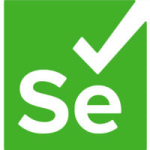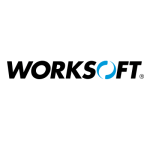What is our primary use case?
We have several healthcare products across the healthcare continuum, and we use the Sauce Labs platform to test our applications across different browser and OS combinations. We also use it to do mobile testing across different mobile devices that we may not have. It's not easy to set up these different configurations, so the cross-browser and cross-OS platform in the cloud gives us the ability to test across these different configurations without having to set them up or maintain them.
At this point, we are trying to focus on API testing.
My role is with a central team that helps other teams. If another team is struggling then we reach out to them and offer assistance. Because of this, I am familiar with how some teams are using the product. If on the other hand, a team is doing well and doesn't reach out, then I don't have any insight into how they are using the solution or how well things are going.
How has it helped my organization?
We've had an event where I worked with the vendor to coordinate an automation day at my company. They worked with our QA engineers through a training process where we had a test repo that we were able to run across different browser and OS combinations using the platform.
Technical support is very important because it helps us get through issues faster. When we are trying to integrate with a new tool, as is the case now because we're trying to move to GCP, we have a dedicated solution engineer to work with us. The engineer is helping us as we ramp up with GCP, getting our automation to work.
We went through this a few years ago with Azure. Learning a new tool is challenging enough, and then trying to make it work with our existing processes is even more difficult. For example, we need to enable our test automation to run on the new platform and have everything work together. It can be challenging, not to mention that mobile testing is still evolving. This is why support is important. They have helped us with our questions and to get through any blockers.
For the most part, the product is optimized for automation and integration with the major CI/CD platforms and developer tools. That said, our constant complaint is that it is kind of slow. We are trying to figure out ways that we can work around the slowness, and what things we can do better.
We have a lot of products here in the company, and not everyone is leveraging the cross-browser testing platform that is available at Sauce Labs, but we have more and more teams adopting it in the last three years. We are trying to collect more insights into how our users are accessing our applications and using that insight to cover all those different testing configurations using the Sauce Labs platform, so we are trying to leverage the platform more in our internal testing.
For now, Sauce labs covers our needs with respect to the number of browser/OS combinations and mobile devices. However, having more availability and looking into different strategies for making things faster are important. Our goal is always to get faster feedback on a build, which means if it takes a long time to run an automation suite then it's less likely that we'll use it. We're always seeking ways to add capabilities and expedite things.
Having the ability to test our application on additional browser/OS/mobile device combinations opens up additional revenue streams for us because we have a larger user base. It gives us the confidence that the application we are putting out will generate a positive user experience because we've covered all of those testing combinations.
We've gone through a lot of OKRs and have had a general goal to reduce the time it takes for us to test applications. This product enables us to run tests in parallel, which helps to make things faster. I don't have any concrete or documented examples of how long it would take to complete our testing before using the tool because we've evolved the way we write automation.
There were times where it would take half a day to run an entire suite of tests, and through some of the improvements we've made, with and without the tool, our goal has been to be able to run a smoke test in 30 minutes. Some teams are able to achieve that, whereas others cannot.
There is really no one answer that fits because we have teams that are across the spectrum. Some are working with mature products and some are just getting started. I know of one of our teams that optimized their automation and with Sauce Labs, they have been able to take their automated test time down from three hours to approximately 30 minutes. This is only one team out of many but it demonstrates a significant change.
What is most valuable?
The most valuable feature is cross-browser, cross-OS, cross-mobile device testing.
The parallelization of automated tests is a best practice that I recommend. Some of the teams are able to do that, although some cannot because of the way the tests are formatted. If their configuration allows for it then it is definitely something that I recommend they take advantage of.
Running testing in parallel has worked well for some teams. In one instance, a team was able to split their tests so that they ran across two platforms. Running these two configurations, they initially cut the three-hour testing time in half. Within each of those configurations, we were able to parallelize even further within our test framework, and ultimately, we were able to get the test time down to 33 minutes.
What needs improvement?
The process can be a little slow to configure and get started. It's a cloud platform and you're trying to run automated tests. It first has to be configured, then the test downloaded, then you have to configure the environment that you're going to run on, then kick off the test based on what your needs are. All of this takes time.
We have faced challenges with the availability of mobile devices. There was once or twice where there were no mobile devices available. These instances may have been due to a service outage.
Buyer's Guide
Sauce Labs
March 2025
Learn what your peers think about Sauce Labs. Get advice and tips from experienced pros sharing their opinions. Updated: March 2025.
846,549 professionals have used our research since 2012.
For how long have I used the solution?
I have been using Sauce Labs for approximately five years.
What do I think about the stability of the solution?
We run our testing on a daily basis and I don't think we've run into any stability issues. Nothing that I am aware of has been a concern.
How are customer service and support?
As we run into issues with anything that we are trying to do or integrating with to run our test automation, we reach out to their support team. Anytime that we need something and we need a quick answer, my first recommendation to anyone that reaches out to us for help is to call support and get it logged. This way, we can get someone to start responding.
Some of the support team members are better than others. Overall, I would rate the support between six and seven out of ten.
Which solution did I use previously and why did I switch?
We did not use another similar solution prior to Sauce Labs.
Also, personally, I have not used any other cross-browser testing platforms.
How was the initial setup?
I was not involved in the initial setup or getting it integrated with our automation test framework, but I think it was fairly easy.
What about the implementation team?
The initial setup was done in-house.
As a SaaS product, it is always up to date.
What's my experience with pricing, setup cost, and licensing?
The pricing is definitely on the higher end, and there are other options that are more cost-effective. One of our teams that was using Sauce Labs separately decided to go with a different solution that was less costly.
Which other solutions did I evaluate?
Prior to choosing Sauce Labs, the company evaluated BrowserStack. I was not part of the decision process but the differentiating factor may have been the support.
What other advice do I have?
We have our internal framework and we basically use Sauce Labs for cross-browser capabilities and mobile device capabilities. Since we have our own framework, we have not explored any functional testing capabilities that the platform has.
The vendor has acquired API Fortress, and it is available within our account for free to try out. That is something we're going to have a demo next week to look into because, at this point, we want to start focusing on API testing. It's helpful that we are able to run our UI tests across different platforms but we would like to focus more on the other layers of the application. We would like to test under the hood, the business layer, more.
I would rate this solution an eight out of ten.
Which deployment model are you using for this solution?
Public Cloud
Disclosure: PeerSpot contacted the reviewer to collect the review and to validate authenticity. The reviewer was referred by the vendor, but the review is not subject to editing or approval by the vendor.












